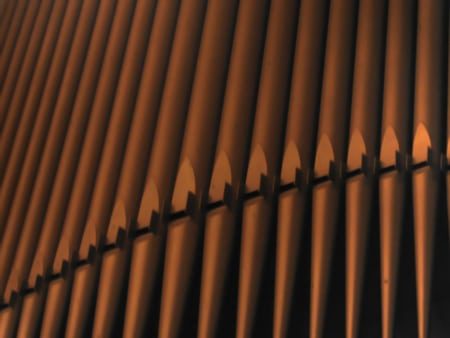4 Lessons for Leading a Traditional Worship Service

Q: My church is all contemporary worship, but I’ve been asked to fill in at another church down the street that is purely traditional. What are some things I should know about the tech side of leading in a traditional service?
A: When I was 21, a local church hired me to lead worship at their mid-week service. The pastor explained that they wanted modern rock, “lights and big drums” worship, and it was my job to make it happen. What I didn’t know was that the service I was being handed was a battlefield in the church’s ongoing worship war. It was clear from the start that people weren’t happy with the new music, and so the elder board asked me to make some changes. Within four months, the service morphed from guitars, drums, vocal team, and lasers to me, at a piano, with a hymnal. It was the start of my ongoing love affair with traditional worship music.
I could not have been more out of my element. For a young keyboardist more at home with face-melting rock anthems than four-part harmony, it was a huge adjustment. Not only did I need to learn new musical styles and a new repertoire, I had to learn to think differently about the technology we were using in the service.
If you’re a contemporary worship leader stepping in to lead congregational worship in a traditional setting, let me share four things I learned along the way.
1. Turn down the lead vocal mic.
In a contemporary service, we often mix audio at a level where the sound envelops the listener, so that there’s a kinetic reaction to the experience even if they aren’t singing along. When we’re leading, we get nervous if our mic isn’t loud enough to sing out over the congregation. In a traditional service, the congregation doesn’t need that kind of leadership. As I’m often reminded by some of our church members, they know these songs better than I do! Traditional congregations love to sing, they love to hear themselves singing, and cranking up the lead vocal mic can get in the way. That sense of overwhelming power and sonic envelopment? That’s the job of the organ.
2. The organ is a sovereign nation.
In many sanctuaries, the organ isn’t routed through the sound system. Even if it’s an electric organ with no pipes, it’s likely to have its own set of speakers that are independent from the house system. That means there are some limitations to what we can do, like bringing the overall level up or down at the soundboard, or sending the organ to your vocal monitor. Speaking of monitors …
3. You may not get (or need) a monitor.
The first and second points together add up to the fact that you may not need a monitor. In a contemporary setting, it’s hard to do your job unless the full radio mix is screaming back up at you from a wedge or your in-ears. However, the lower volume of the leading voice together with the independence of the organ often makes a vocal monitor unnecessary. This can be intimidating at first, but it can also be great practice in helping you trust your own voice.
4. Your congregation will have their own monitors.
How hip is the traditional service? So hip that some folks in the congregation have their own in-ear monitors! Many traditional services use wireless assisted listening devices, similar to wireless in-ear monitors, to amplify the service for people with hearing loss. In some sanctuaries, these assisted listening devices are fed by a dedicated aux mix from the main board. In others, they only have a feed from the pastor’s mic. It’s a good idea to talk with the sound tech about what’s going to the assisted listening devices, and how it might affect the worship experience of those people using them.
In my current position, I live in both the contemporary and traditional worlds. I lead a small early morning chapel service with an organist and a hymnal, as well as rotating through to lead the large contemporary service with full throttle production. I’m finding that my experience leading in a traditional setting is making me more thoughtful about how we employ technology in the contemporary services. The same question stays at the forefront in both settings: are these tools serving the worship experience, or hindering it?
Michael A. Lee is a professional keyboardist, composer, and a professor at Azusa Pacific University. He leads worship at Crossline Church. michaelleemusic.com





